Menstrual Health
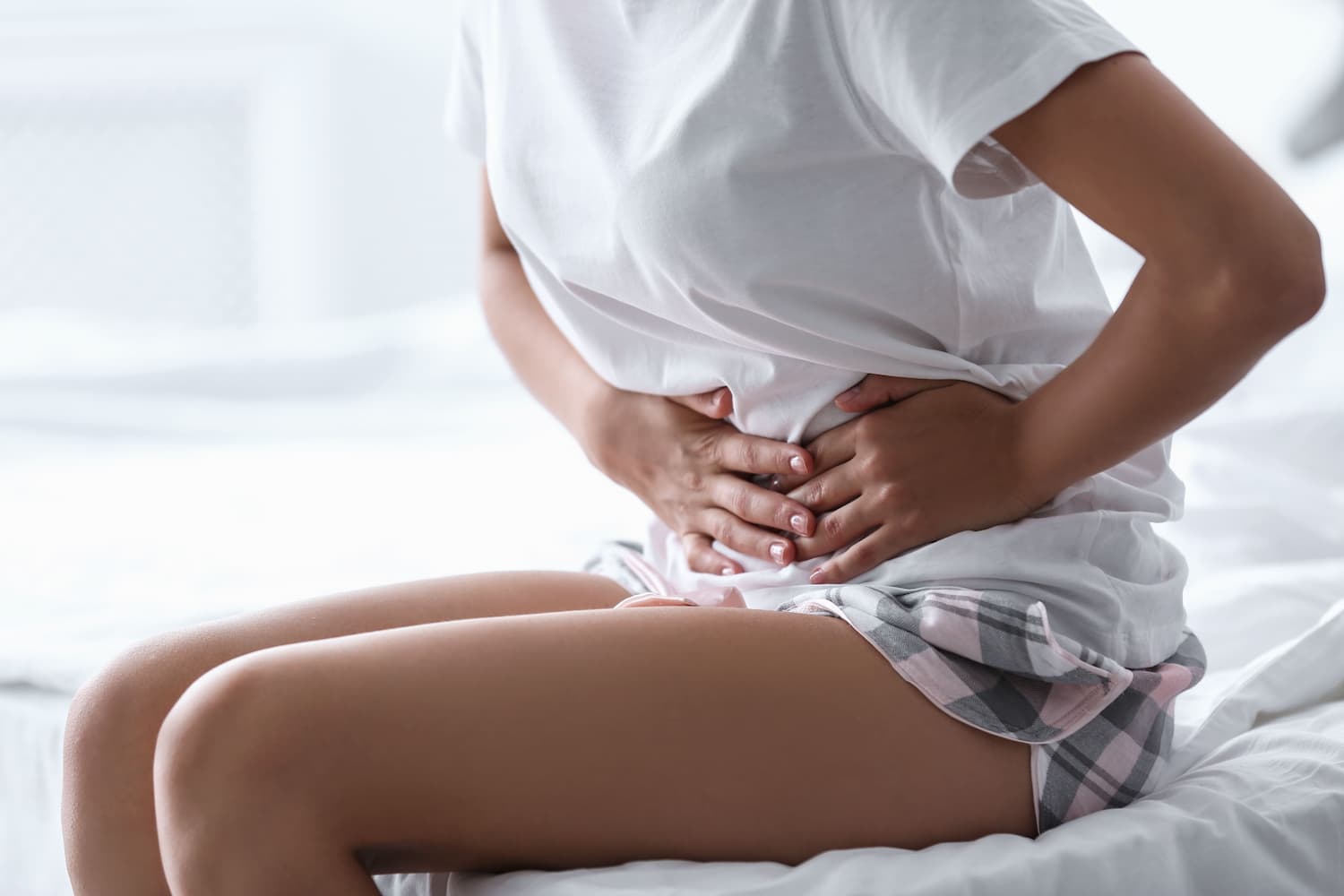
Good menstrual health and hygiene is essential for a woman’s overall well-being. However, some women experience issues which have a variety of underlying causes (or no known cause), for which there are a range of different treatment options available. These will often depend on your stage of life, medical history, lifestyle and personal preferences. It is important to discuss with your doctor which options are right for you. In many cases, the doctor may recommend a physical examination and order some tests to diagnose any issues which are causing menstrual health problems and ensure the most appropriate treatment for you.
About Periods
Your ovaries start to produce female hormones around puberty which cause changes to the uterine lining. Every month during your period the lining of your womb is shed together with some blood for several days each month. This happens until you reach Menopause. Many women experience their periods differently, both in terms of the amount of blood lost and the nature of the blood loss. Bleeding usually lasts around 5 days, with the heaviest bleeding on the first 2 days, but can be up to 8 days. Period pain (pain in the lower abdomen and pelvis) is normal during periods.
Women usually use sanitary towels or tampons to soak up the blood during their period. Sanitary towels are placed in your underwear whereas tampons are inserted into your vagina. Both come in different sizes, depending on how heavy the bleeding is and both need to be replaced regularly. Some women will use tampons for swimming but pads at other times and some women that have very heavy periods use both together. Menstrual cups and reusable period pants are alternatives to sanitary towels and tampons. Menstrual cups are reusable silicone devices which are inserted into the vagina to collect menstrual blood.
Since sperm can stay alive inside a women’s body for up to 5 days, it is possible, though unlikely, to get pregnant during your period if you ovulate early and have a short menstrual cycle.
The Menstrual Cycle
The time between the start of one period and the start of the next is called the menstrual cycle. The average length of a menstrual cycle is 28 days, though anything between 24 and 35 days is normal. Your female hormones change during your menstrual cycle. During the first half of the cycle the levels of two main hormones, oestrogen and progesterone, are low to begin with. During this phase eggs in your ovaries grow and develop in fluid-filled cavities called follicles and these follicles produce oestrogen. Therefore, during the first half of your cycle the level of oestrogen in your blood rises. Ovulation, the release of an egg into your Fallopian tube, occurs around halfway through your menstrual cycle (around 14 days after the start of your period). The egg travels along your Fallopian tube into your womb and may be fertilised if you have recently had sex and there are sperm in your womb. After ovulation, the follicle that released the egg makes a hormone called progesterone as well as oestrogen. Progesterone causes the lining of the uterus to swell and be ready to receive a fertilised egg. However, if the egg is not fertilised, the levels of progesterone and oestrogen gradually fall. The lining of your womb is then shed (a period) and a new cycle then begins.
Some women experience abnormal symptoms, including painful menstrual periods, heavy bleeding, and pre-menstrual syndrome (PMS). You should consult your GP if you experience these symptoms or changes to your normal pattern of periods that lasts for several months.
Period Pain
Most women usually experience period pain. Usually, this involves pain in your lower abdomen which can spread to your lower back or to the top of your legs. It usually commences as bleeding starts or the day before. It can last up to 2-3 days and the pain can vary from one period to the next.
Some women also experience, headaches, tiredness, faintness, breast tenderness, nausea, bloating and can feel emotional or tearful. If you experience other symptoms, such as fever, vaginal discharge, sudden sever pain, bleeding between periods or after sex, then you should see your GP. If your periods become progressively more painful and heavy you should also see your GP, especially if normal pain relief does not relieve your symptoms.
Painful Periods (dysmenorrhoea)
In around 1 in 10 women, period pain is severe enough to affect day-to-day life such as going to school or work. This is called dysmenorrhoea. There are two types of dysmenorrhoea, primary and secondary. You should see your GP if you develop the symptoms described below. Your GP will ask about your symptoms and will probably conduct a physical examination to diagnose the cause of your abnormal period pain. They may take some swab samples to look for any signs of infection, and if your GP feels that you have secondary dysmenorrhoea, they may arrange further tests including an ultrasound scan of your womb and pelvis, a hysteroscopy to examine the inside of your womb, or a laparoscopy to examine the internal organs of your pelvis.
- Primary dysmenorrhoea. This occurs where no underlying problem of the womb or pelvis can be found, and it usually is experienced by teenagers and women in their 20s. This is the most common type of painful period. It appears to be caused either by a build-up of a chemical called prostaglandin or where the womb is extra sensitive to prostaglandin. This may cause the womb to contract too hard, reducing the blood supply to the womb and leading to pain.
There are a number of treatments that may help if you have primary dysmenorrhoea, including exercise, gentle massage and relaxation techniques. A hot water bottle on your lower abdomen or a hot bath may provide relief. Non-steroidal anti-inflammatory painkillers can significantly ease the pain for the majority of women, and they usually reduce the amount of bleeding. Some, like ibuprofen, is available over the counter at the chemist. Some people cannot take these medications (e.g. people with a stomach ulcer and some people with asthma) and so usually take paracetamol.
Painful and heavy periods are much less likely if you use Combined hormonal contraceptive (CHC) in the form of the pill, the patch or the ring. Similarly, the intrauterine system (IUS), a long-term contraceptive, also reduces the amount of pain and bleeding during periods.
A transcutaneous electrical nerve stimulation (TENS) machine may be an option if you prefer not to use medication, and these can be bought from the chemist. They work by giving out a small electrical current which interferes with pain signals sent to the brain from the nerves.
- Secondary dysmenorrhoea. This is caused by a problem of the womb or pelvis. This is less common and is more likely to occur in women in their 30s and 40s. It may be caused by medical conditions such Endometriosis, Fibroids, or due to an infection of the womb and Fallopian tubes. The main symptom is lower abdominal pain during your periods, though your periods tend to become more painful after several years of periods with mild period pain. Signs of secondary dysmenorrhoea include:
- Changes to your usual pattern of period pain, including if the pain starts several days before the period begins and lasts all the way through the period.
- Other symptoms such as bleeding or pain between periods, bleeding that becomes heavier than previously, vaginal discharge, pain during sex, or pain in your rectum)
The treatment of secondary dysmenorrhoea depends on whether the underlying cause is due to Fibroids, Endometriosis or an infection of the womb and Fallopian tubes. If you have an intrauterine device (IUD), also known as the copper coil and have painful periods, the treatments for primary dysmenorrhoea often help. Some women prefer to have their IUD removed if symptoms do not improve.
Heavy periods (menorrhagia)
Heavy periods are difficult to measure. For practical purposes, periods are considered to be heavy if they result in blood flooding through to your clothes or bedding, the need to frequently change your sanitary towels or tampons, the need to use double sanitary protection, or your normal lifestyle being impacted because of heavy bleeding. They are relatively common and in most cases no cause can be found. In some cases, heavy periods may be due to Endometriosis, Fibroids, another medical condition, or a medication side-effect (e.g. from Warfarin, some chemotherapy medications). If you stop taking the contraceptive pill it may appear to cause heavy periods as women become used to lighter monthly bleeds that occur whilst on the pill. Menorrhagia means heavy periods that recur each month.
For most women, the cause of heavy periods is unclear and there is no abnormality of the womb or hormones. However, it is very important to see your GP who may in some circumstances want to conduct an internal vaginal examination to examine your womb. A blood test to check for anaemia may also be performed if you bleed heavily each month as you may not take in enough iron in your diet to replace the blood that you lose. The majority of women with recurring heavy periods develop anaemia. If the vaginal examination is normal and there are no other associated symptoms, no further tests may be needed. The diagnosis is usually dysfunctional uterine bleeding and treatment may be started if required.
Further tests may be ordered for some women if there are other symptoms such as bleeding or pain between periods, bleeding or pain during or just after sex, vaginal discharge, pain during sex, or have symptoms suggesting a hormonal problem or blood disorder. Such tests may include an ultrasound scan of your womb which can detect Fibroids, Polyps, or other changes in the structure of your womb, internal swabs to detect an infection, endometrial sampling, a hysteroscopy to examine the inside of your womb, or blood tests if, for example, an underactive thyroid gland or a bleeding disorder is suspected.
Your GP may give you a period blood loss chart or diary to fill in for a few periods before and after any treatment so that your GP can understand what your symptoms are and whether treatment is needed.
Treatment Options for Heavy Periods
Depending on the cause of the heavy periods, there are a number of treatment options to reduce the amount of blood loss. For women who have regular but heavy periods with no clear cause (the majority of cases) treatment options can include:
- Levonorgestrel intrauterine system (LNG-IUS). The LNG-IUS, such as the Mirena or Kyleena Coil, is inserted into the womb and slowly releases a small amount of a progestogen hormone called levonorgestrel. In most women, bleeding becomes either very light or stops altogether within 3-6 months of commencement. Period pain is usually reduced too. LNG-IUS is particularly useful for women who require long-term contraception, as it is also a reliable form of contraception. It is not usually suitable if you do not need long-term contraception.
- Tranexamic acid tablets. Tranexamic acid tablets may be an option for you if the LNG-IUS is not suitable or not wanted. Treatment with tranexamic acid can reduce the heaviness of bleeding by almost half in most cases. However, the number of days of bleeding during a period is not reduced and neither is period pain.
- Anti-inflammatory painkillers. Your GP may prescribe medications such as mefenamic acid or naproxen, or you can buy ibuprofen from a chemist. These medicines can reduce blood loss by about a quarter in most cases and can also ease period pain. If you have a history of a duodenal or stomach ulcers or asthma you should only take these medications on your GP's advice.
- The combined oral contraceptive (COC) taken as a pill, patch, or ring. This reduces bleeding by at least a third in most women and it often helps with period pain too. It is a popular treatment with women who also want contraception but who do not want to use the LNG-IUS.
- Long-acting progestogen contraceptives. The contraceptive injection and the contraceptive implant also tend to reduce heavy periods. Up to half of women on the contraceptive injection have no periods after a year.
- Surgical treatment and other procedures. Having surgery is not a first-line treatment. It may be an option if all other options have not worked or are unsuitable. Surgical options include:
- Removing or destroying the lining of the womb via a procedure called endometrial ablation, using heat, laser, or energy waves. This usually successful but sometimes needs to be repeated as it is not a permanent solution.
- If fibroids cause your heavy periods, Uterine artery embolisation (UAE) may be an option. This blocks the blood vessels that supply the fibroids and causes them to shrink. Myomectomy is another treatment option for heavy periods caused by fibroids. It involves surgery to remove fibroids from the wall of your womb.
- Hysterectomy is where the womb is totally removed. However, it is done much less commonly these days since endometrial ablation became available, as it is a more major operation, with more possible problems and a longer recovery time.
You should discuss these options with your GP as they will be able to advise you which is the optimal treatment for your circumstances.
Healthy Lifestyle and Menstrual Health
Maintaining a healthy lifestyle is important for good menstrual health. Studies suggest that women who exercise regularly are less likely to suffer menstrual pain, cramps and mood disturbance. Furthermore, there is a growing body of evidence which suggests diets rich in omega-3 (such as fish), calcium, and vitamin D, and which are low in animal fats, salt, and caffeine may reduce the risk of PMS symptoms. Avoiding salt can help reduce fluid retention, abdominal bloating, breast swelling and pain. Also avoid saturated fats such as butter, cream, bacon and potato chips. A healthy diet is high in fruit and vegetables, nuts, seeds, fish, legumes, and wholegrains. Lean meat is an important source of iron and protein, especially for women with heavy periods. Drink more water and herbal teas such as chamomile.
Healthy sleep can also help with menstrual health. Avoid heavy meals or spicy foods just before bed and develop a regular bedtime routine. Relaxing before bed with a warm bath or shower may be helpful as can stress reduction via yoga or meditation.
Some women choose to take supplements such as vitamins, minerals and amino acids to help with symptoms of PMS. However, the evidence for many supplements is not strong and check with your doctor before taking any supplements. The most popular supplements include Vitamins B6 and B1, Vitamin E, Vitamin D, Magnesium, Calcium, Zinc, and Fish Oil.
Premenstrual Syndrome (PMS)
PMS is the name given to various symptoms you may experience in the weeks before your period. It can affect women of any age between puberty and Menopause, though symptoms usually settle during pregnancy. PMS can negatively impact your quality of life and interpersonal relationships. Premenstrual dysphoric disorder (PMDD) is used to describe a severe form of PMS.
PMS symptoms can vary a great deal from one period to the next. Symptoms typically begin in the week before your period and last until five or so days after the start of your period. PMS symptoms include:
- Psychological symptoms such as tension, irritability, tiredness, aggression or anger, mood swings, anxiety, or loss of confidence. You may also experience changes to your sleep pattern and sex life. Relationships may become strained because of these symptoms.
- Physical symptoms such as swollen or tender breasts, abdominal bloating, swelling of the feet or hands, weight gain, and headaches.
- Behavioural symptoms such as problems thinking, learning, reading, remembering, speaking, listening and paying attention.
Certain medical conditions such as epilepsy, asthma, migraine, or cold sores can become worse before a period.
Causes of PMS
The cause of PMS is not known. It is not due to imbalanced hormone levels or to too much or too little of any hormone. Nevertheless, the release of an egg from an ovary each month appears to trigger symptoms. It is thought that women with PMS are more sensitive to the normal level of progesterone which is passed into the bloodstream after you ovulate. One effect of over-sensitivity to progesterone seems to reduce the level of certain brain chemicals, which may explain why medications that increase the level of these brain chemicals help counter the impact of PMS.
Diagnosis of PMS
There is no test for PMS, so diagnosis is based on your symptoms. Diagnosis is difficult as symptoms may be similar to other conditions such as anxiety or depression. Generally, if PMS symptoms start in the days leading up to your period, they become gradually become worse as your period approaches and continue for three to four days after your period starts, then they are likely due to PMS. Conversely, symptoms that occur all the time are not due to PMS.
How to reduce PMS symptoms
- Read about it. It may help you to understand what is happening. This may relieve some of the anxiety about symptoms. It may be useful to keep a chart or diary. Note the days you feel irritable, low, or anxious, or have any other symptoms that you feel in your everyday life that may be part of PMS. See how long symptoms last before a period. Then it may be worth noting in a diary when your periods are due. As you can predict when your PMS symptoms are likely to occur, you can expect them and be ready for them. For example, it may be possible to avoid doing important things on the days when symptoms are expected.
- Talk about it. Make sure to be honest and talk about it with your family, friends or partner. It may help them to understand how you are feeling. It may be best to do this after your period when symptoms have eased.
- Some women who exercise regularly say they have less of a problem with PMS. Try doing some regular exercise several times a week.
- Food and drink. Some people claim that various diets help to ease PMS. However, there is little evidence from research trials that this is true. Reducing the amount of sugar, sugary drinks and refined carbohydrates you eat within a balanced diet before your period may help your symptoms. Carbohydrates with a lower glycaemic index give a slower steadier release of sugar and may be a better choice for some women with PMS. (eg, granary/wholemeal bread rather than white bread). Smaller more frequent meals may suit better than infrequent large meals.
- Reduce caffeine and alcohol intake. Some women find that alcohol or caffeine (found in tea, coffee, cola, etc) makes their symptoms worse. So, it may be worth a trial of not having alcohol or caffeine prior to periods to see if this helps.
Treatment Options for PMS
Many treatments for PMS have been tried yet few that have been proven to work. Moreover, treatments may take a while to work. Lifestyle changes can make a positive difference, such as a healthy diet, regular exercise, and reducing caffeine and alcohol intake. Other treatment options include:
- Non-Prescription Treatments Options. Various herbal products, vitamins and minerals are sold for the treatment of PMS, such as magnesium, vitamin B6, and calcium, though there is not good evidence for their effectiveness. Evening primrose oil or simple painkillers such as ibuprofen or paracetamol may help with breast tenderness. Cognitive behavioural therapy (CBT) is a talking psychological treatment designed to arm you with more adaptive ways of coping with PMS. This has been shown to be effective for some women.
- Selective serotonin reuptake inhibitors (SSRIs). While these medications are used to treat depression, they have also been found to ease the symptoms of PMS, even if you are not depressed, by increasing the level of serotonin in the brain. They are not licensed for PMS treatment and side-effects occur in some women.
- The combined oral contraceptive (COC) taken as a pill, patch or ring. While these contraceptives prevent ovulation, they do not always help with PMS, as they contain progestogen hormones (with a similar action to progesterone). Some of the newer COC treatments may have better efficacy, but research is still ongoing. This should be discussed with your GP.
- Oestrogen. Oestrogen given via a patch or gel has been shown to improve PMS symptoms by suppressing egg production. Oestrogen tablets are not effective though.
- Other treatments. Other methods of suppressing ovulation include medications called gonadotrophin-releasing hormone analogues, which are only used for very severe PMS. They are usually advised by specialists and given by injection and with hormone replacement therapy (HRT) to protect your bones and prevent symptoms of Menopause. Surgery to remove the womb (hysterectomy) and both ovaries also prevents ovulation and will cure PMS. However, it is a drastic option and only performed in the most severe cases where nothing else has helped.
You should discuss these options with your GP as they will be able to advise you which is the optimal treatment for your circumstances.
Bleeding at Abnormal Times
You should see your GP if you have vaginal bleeding at outside of your expected periods. This includes if bleeding occurs after you have sex, or after you have reached Menopause.
Bleeding in between your periods has several causes. They include infections or polyps (small fleshy lumps that can occur on the neck of the womb or inside the cavity of the womb). There are various causes of bleeding between periods:
- Small bleeds that occur in the first few months after starting the contraceptive pill. This usually settles over a few months.
- Inflammation or soreness of the neck of the womb, most commonly due to infections such as chlamydia and hormonal changes. This can make it more likely to bleed after sex.
- Cancer of the neck of the womb or cancer of the womb.
Periods Which Stop or are Irregular
Periods most commonly stop due to pregnancy, though it is not uncommon to miss the occasional period for no obvious reason. Other causes of periods stopping include stress, eating disorders, weight loss, over-exercising, and hormonal imbalance. You should see your GP as they can conduct a physical examination and order tests to diagnose the cause of the irregular bleeding.
The time between periods can also vary between women. Irregular periods may indicate that you do not ovulate every month and are more common in the few years leading up to Menopause.
Practices that also provide Menstrual Health

Applewood Medical
Applewood Village, Swords, Co. Dublin

Ashbourne Clinic
62 Declan’s Street, Killegland Walk, Ashbourne, A84EP40

Ashford Clinic
Unit 1 Mount Usher Court , Ashford Co Wicklow

Athy Medical
Carlow Road , Athy, R14 X672 , Co Kildare

Ballycane Surgery
Unit 1 & 2, Hazelmere Shopping Centre, Naas, Co. Kildare, W91 AW7D

Ballyowen Medical
Ballyowen Lane, Lucan, Co Dublin

Blackrock Medical
Frascati Centre, Blackrock, Co Dublin, A94 H6V9

Blessington Medical
McGreals Primary Care Centre, Blessington Business Park, Blessington, Co. Wicklow

Boroimhe Medical
Forrest Road, Swords, Co. Dublin

Bryanstown Medical
Dublin Road, Martello Village, Drogheda, Co Louth

Carlow Medical
Shamrock Plaza, Green Lane, Carlow, Co Carlow

Castleknock Village Medical
The Square, Castleknock, D15 P3VX

Celbridge Medical
Celbridge Primary Care Centre, Maynooth Road, Celbridge, Co. Kildare, W23 YK24

Churchtown Medical
96 -98 Churchtown Road Upper, Churchtown, Co. Dublin, D14 EW68

Citywest Medical
Unit 5, Citywest Shopping Centre, Citywest, Dublin 24 D24KOYT

Clifton Court Medical
Clifton Court, Fitzwilliam Street Lower, Dublin 2, D02 V279

Cobh Medical
Cobh Primary Care Centre, GP Surgery, Ticknock, Cobh P24 V621

Corbally Medical
Corbally Medical , Corbally Rd, Limerick, V94 WFX9

Cottage Surgery
New Rd, Bailieborough, Co. Cavan, A82 D2XO

Desmond Medical
Station Road, Gortboy, Newcastle West, Co. Limerick, V42RD76

Dolmen Family Medical Practice
Shamrock Plaza, Green Lane, Carlow, R93 YF70

Donaghmede Medical
Donaghmede Shopping Centre, Grange Road, Dublin 13

Doonmoon Medical
Doonmoon Medical Centre, St Nessan's Road, Dooradoyle, Limerick V94 FCD1
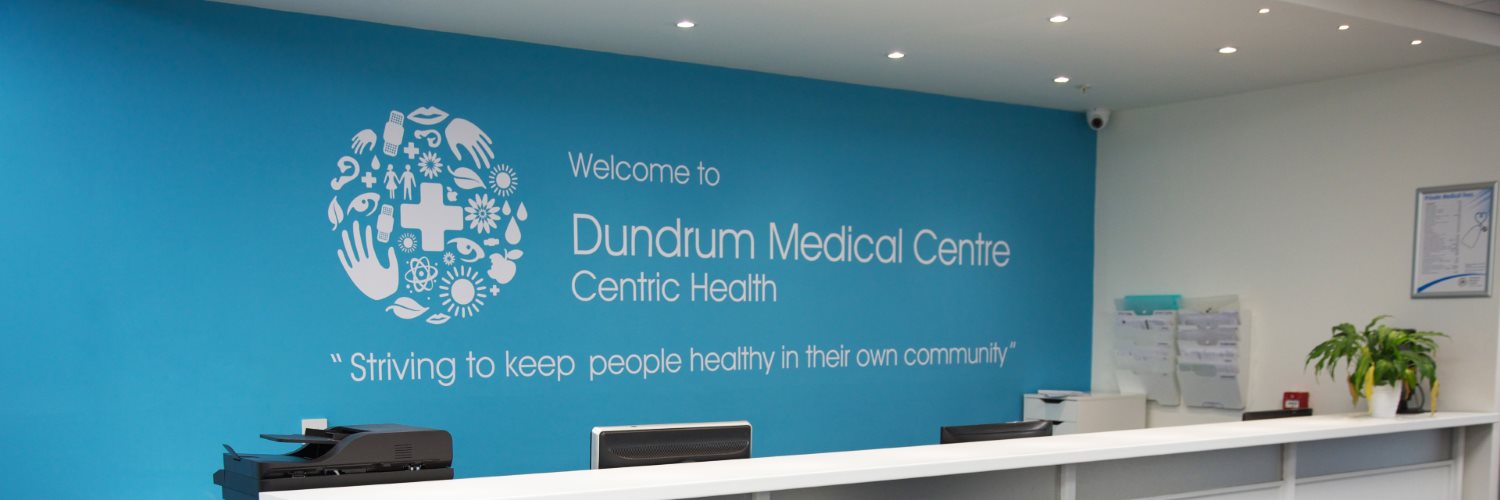
Dundrum Medical
Dundrum Medical Centre, Level 4, Dundrum Town Centre, Sandyford Road, Dundrum, Dublin 16, D16 XC91

Ennis Medical
Francis Street, Ennis, Co Clare V95 KC3H,

Ennis Road Medical
Ennis Road, Limerick

Fairgate Medical
No.6 Lower Ground Floor, Boyne Shopping Centre, Drogheda. A92W990

Finglas Medical
45 - 47 Main Street, Finglas, Dublin 11

Glasnevin Family Practice
11 Finglas Rd, Harts Corner, Glasnevin, Dublin 11, D11PA00

Grafton Medical
Grafton Buildings, 34 Grafton Street, Dublin 2, D02 XY06

Headfort Family Practice
Primary Care Centre, Navan Road , Kells, Co. Meath, A82 H3C7
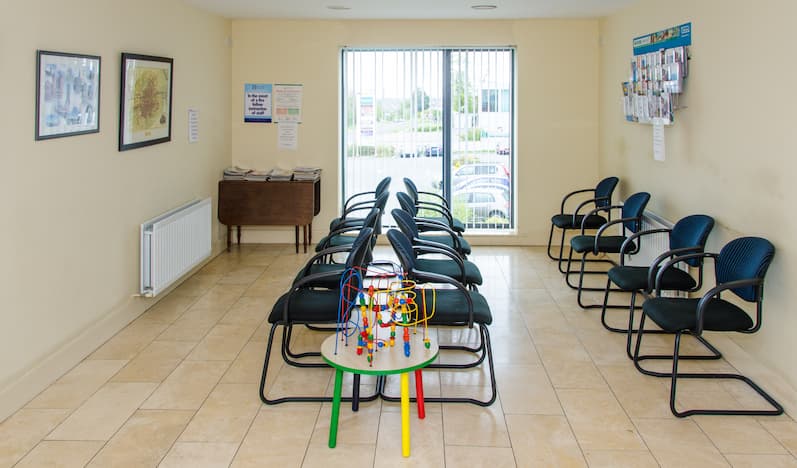
Hilltop Medical
Rathmullan Rd., Rathmullan, Drogheda, A92 KVP8, Co. Louth

Johnstown Medical
Johnstown Road, Dun Laoghaire, Co.Dublin , A96W248

Kilcock Medical
The Bawnogues, Kilcock, Co. Kildare, , W23 XY89

Kilcullen Medical
The Medical Centre, Main Street, Kilcullen, Co Kildare, R56 NV26

Killarney GP
6B Scott St, East Avenue Road, Killarney, Co. Kerry.

Knocknacarra Medical
Clybaun Road, Knocknacarra, Galway, H91 TKF3

Manor Mills Medical
Manor Mills Shopping Centre, Mill Street, Maynooth, Co Kildare W23 V5X5

Maretimo Medical
The Promenade, Upper Salthill Road, Salthill, Co Galway, H91 EW68

Meadow Springs Medical
41a Meadow Springs, Clareview, Limerick, V94 RPA8

Medina Medical
Mill Road, Fermoy, Co.Cork, P61 NN79

Navan Road Medical
Primary Care Centre, Navan Road, Dublin 7, D07 K229

Newbridge Family Practice
Orchard House, Moorefield Road, Newbridge, Co. Kildare, W12Y884,
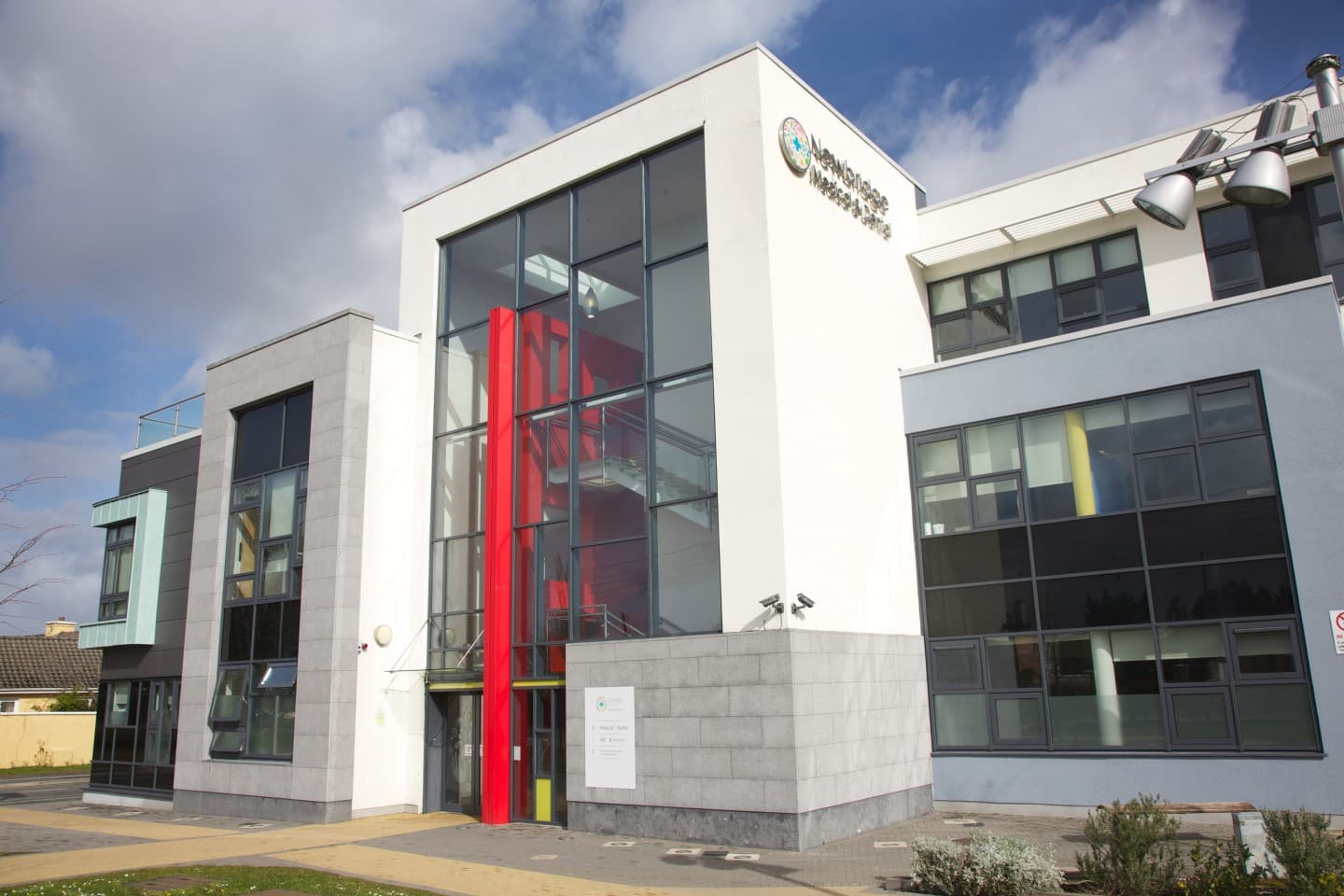
Newbridge Medical
Station Road, Newbridge, Co. Kildare,

Northgate Surgery
226 Pearse Park, Drogheda, Co Louth, A92 E088
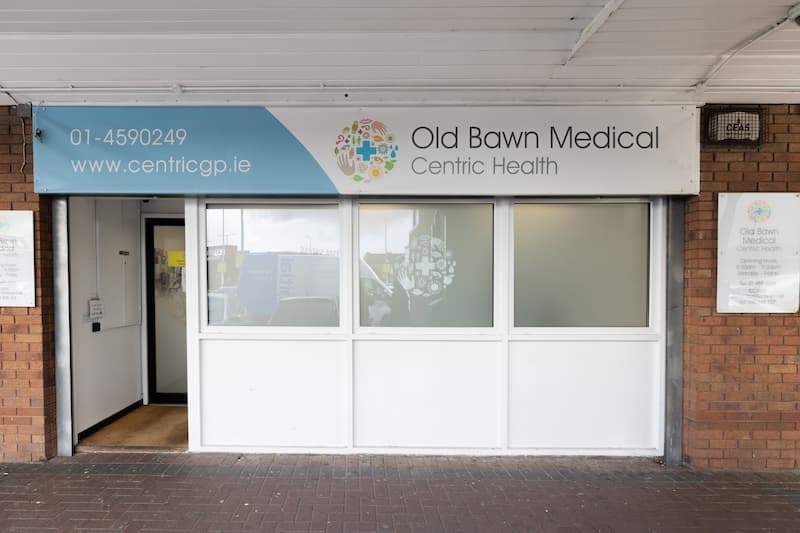
Old Bawn Medical
Unit 2-3 Old Bawn Shopping Centre, Tallaght, D24 HXW3,

Palmerstown Park Medical
Palmerstown Park Medical, Unit 18 First floor Palmerstown Shopping Centre, Palmerstown Dublin 20, D20HP44

Raheen Medical
1 Greaney Close, Raheen, Limerick, V94 V2TT

Raheny Medical
1st Floor, Hilltop Shopping Centre, Station Road, Raheny, Dublin 5, D05 F625
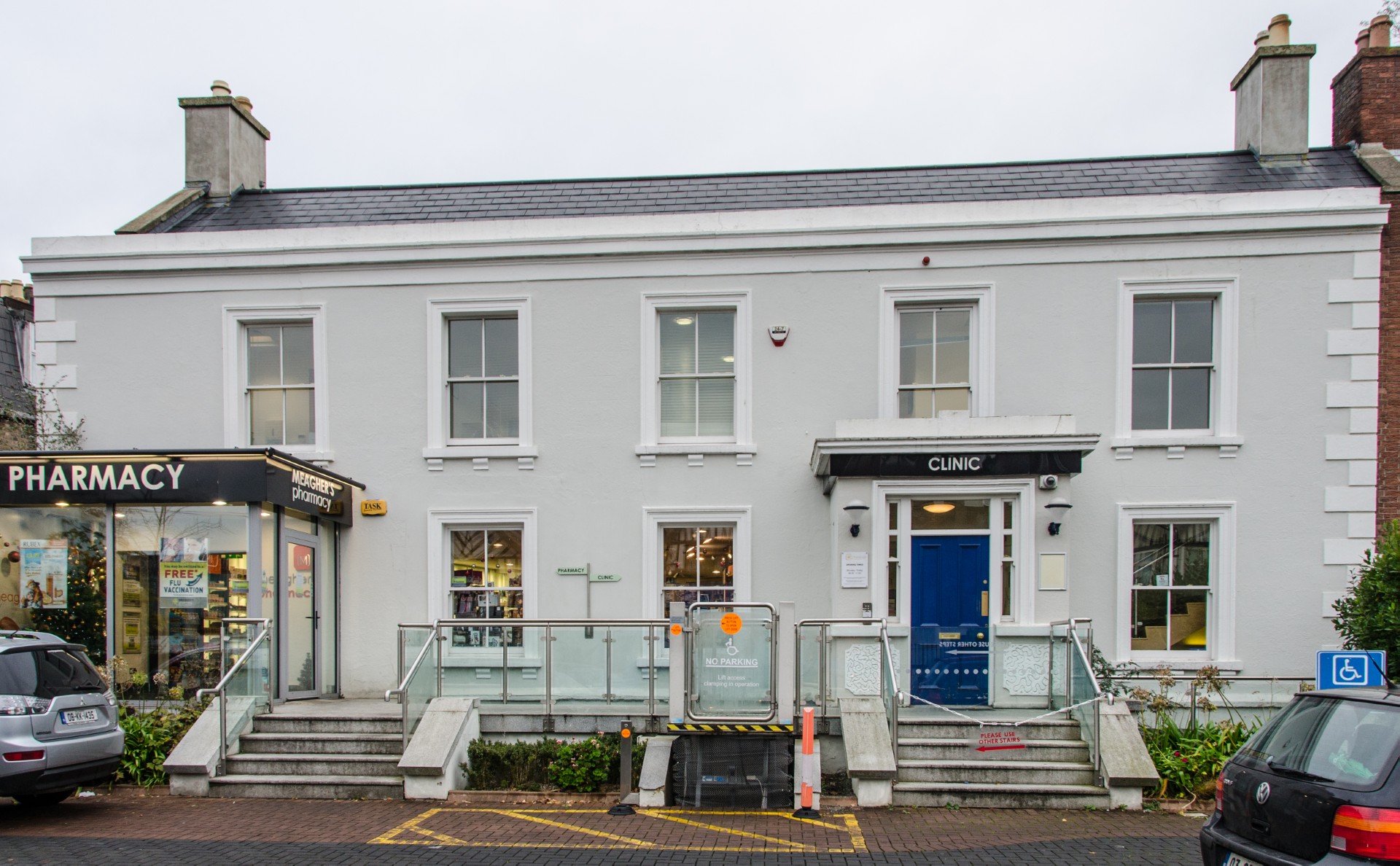
Ranelagh Medical
22-26 Sandford Rd, Ranelagh, Dublin 6, D06 KF84

Roshill Medical
Unit 11, Level 1, Briarhill Shopping Centre, Ballybrit, Galway H915W40

Salem Medical
Wicklow Primary Health Centre, Knockrobin, Co. Wicklow, A67 P762

Sandyford Medical
Unit C7, The Plaza, Beacon South Quarter, Sandyford, Dublin 18, D18 TY79

Sheehan Medical
Unit 301, 3rd Floor, Dun Laoghaire Shopping Centre, Marine Road, Dun Laoghaire, A96 DD74

Southern Cross Medical
Southern Cross Road, Bray, Co. Wicklow, A98 V4K7,

St James’s Gate Medical
114 - 116 James's street, Dublin 8, D08KXN8

Sutton Medical
St. Margaret's, 1 Greenfield Road, , Sutton Dublin 13, D13 H9H6,

Tuskar Medical
St Martins Road, Rosslare Harbour, Wexford Y35 RX62

Terenure Medical
84A Terenure Road East, Terenure, Dublin 6, DA6 W5A2

The Park Clinic
The Park, Cabinteely, Dublin 18, D18 C984

The Plaza Clinic
Main Street, Swords, Co Dublin

The Square Medical
1st Floor Elgee Building, Market Square, Dundalk, Co. Louth. A91 YR9X

Tobin Healthcare Centre
Spencer Street, Castlebar, Co Mayo, F23 WV78

Trim Medical
Trim Primary Care Centre, Longwood Road, Trim, C15 PHP1, Co. Meath

Tyndall Clinic
Unit 9B, Barrowvalley Business Park, Sleaty Road, Graiguecullen, Carlow R93 N6W8

Village Medical Centre
Unit 6 Village Shopping Centre, Watery Lane, Clondalkin, D22V2H9

Wexford Medical
2-3 Redmond Square, Wexford, Y35 PF63,

Wherlands Lane Medical
Blackpool, Cork City, T23 APR3,

Willow Park Medical Centre
72 Willow Park Crescent, Glasnevin, Dublin 11, D11 X981

Windmill Court Medical
Windmill Court Medical, Lower Gerald Griffin Street, Limerick V94 CX6H